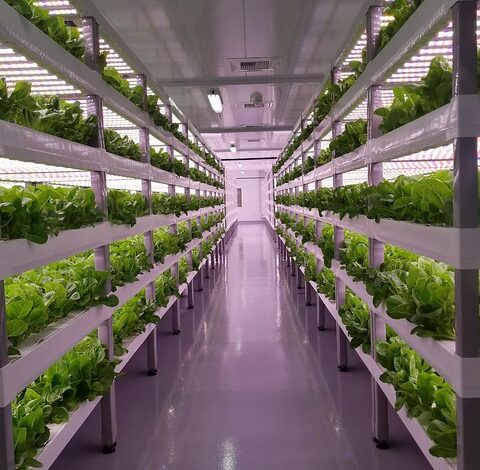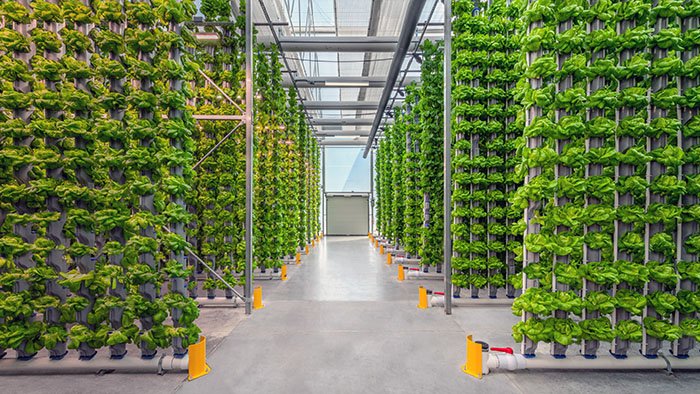The rise of vertical farming: Cultivating a sustainable future
Vertical farming, a sustainable solution, maximizes space, reduces environmental impact, and ensures year-round crop production

In an era marked by growing concerns about food security, environmental sustainability, and urbanization, a revolutionary agricultural concept is gaining momentum – vertical farming. This innovative approach to cultivation represents a paradigm shift in traditional agriculture, offering solutions to some of the pressing challenges faced by the global food industry.
The Basics of Vertical Farming: Going Up to Grow Out
Vertical farming involves growing crops in vertically stacked layers or inclined surfaces, utilizing indoor environments such as warehouses, skyscrapers, or shipping containers. Unlike traditional horizontal farming, vertical farming maximizes the use of vertical space, allowing for the cultivation of crops in a controlled and resource-efficient manner.

Addressing Land Scarcity and Urbanization
One of the primary advantages of vertical farming is its ability to overcome the limitations of arable land scarcity, especially in densely populated urban areas. As cities continue to expand, the available land for agriculture diminishes. Vertical farms, with their compact and space-efficient design, enable the production of crops within the city limits, reducing the need for extensive transportation and decreasing the carbon footprint associated with food distribution.
Year-Round Crop Production: Breaking Seasonal Constraints
Traditional agriculture is often subject to seasonal changes and weather fluctuations, impacting crop yields and supply chains. Vertical farming, however, offers a controlled environment where temperature, humidity, and light can be optimized throughout the year. This controlled setting allows for continuous, year-round cultivation, ensuring a consistent and reliable supply of fresh produce irrespective of external weather conditions.
Resource Efficiency: Less Water, Less Land, More Output
Vertical farming utilizes cutting-edge technologies such as hydroponics, aeroponics, and aquaponics to optimize resource efficiency. Hydroponic systems, for instance, involve growing plants in nutrient-rich water without soil, reducing water usage compared to traditional farming. Additionally, vertical farms use less land and achieve higher crop yields per square foot, contributing to sustainable resource management.
Reducing Environmental Impact: The Green Revolution 2.0
The environmental benefits of vertical farming extend beyond resource efficiency. By minimizing the need for long-distance transportation, vertical farming reduces carbon emissions associated with the conventional supply chain. Furthermore, the controlled environment mitigates the use of pesticides and herbicides, promoting chemical-free cultivation and minimizing the ecological impact on surrounding ecosystems.
Challenges and Innovations: Overcoming Obstacles
While vertical farming holds immense promise, it is not without challenges. Initial setup costs, energy consumption, and the need for specialized knowledge are hurdles that practitioners must overcome. However, ongoing innovations in technology, energy-efficient lighting, and automation are gradually addressing these challenges, making vertical farming increasingly viable and scalable.
Transforming Urban Landscapes: Vertical Farms in Action
Around the world, urban areas are witnessing the emergence of vertical farms as integral components of sustainable urban planning. From the skyscrapers of Singapore to repurposed shipping containers in Brooklyn, vertical farms are transforming urban landscapes. These farms not only provide locally sourced, fresh produce but also serve as educational hubs, fostering awareness about sustainable agriculture.
The Future of Agriculture: Going Up for a Greener Tomorrow
As vertical farming gains traction, it holds the potential to revolutionize the way we approach agriculture. The integration of technology, sustainability practices, and innovative design positions vertical farming as a key player in securing the future of food production. While challenges persist, the growing interest and investments in this field suggest that vertical farming could play a pivotal role in cultivating a more sustainable and resilient global food system.
In conclusion, the rise of vertical farming symbolizes a promising chapter in the ongoing quest for sustainable agricultural practices. By embracing vertical space, harnessing technology, and reimagining urban landscapes, vertical farming offers a glimpse into a greener, more self-sufficient future for global food production.
You might also be interested in – Centre introduces five-year plan to buy maize and pulses from farmers at MSP: Piyush Goyal



